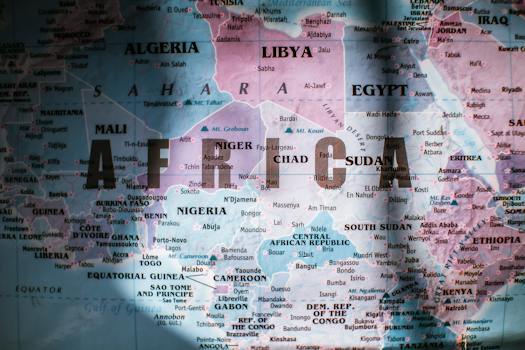

-
Table of Contents
Zealandia: Unveiling Earth's Hidden Continent.
Introduction
Zealandia, also known as Te Riu-a-Māui, is a recently recognized continent on Earth. It is located in the southwestern Pacific Ocean and encompasses New Zealand and New Caledonia. Zealandia is characterized by its distinct geological and geophysical features, including a large landmass mostly submerged beneath the ocean's surface. Its recognition as a continent has sparked scientific interest and further exploration of this unique and relatively unknown part of our planet.
The Geological Origins of Zealandia: Unveiling Earth's Hidden Continent
Zealandia: Earth's Newly Discovered Continent
The Geological Origins of Zealandia: Unveiling Earth's Hidden Continent
In the vast expanse of the Earth's surface, there are still hidden secrets waiting to be uncovered. One such secret is Zealandia, a newly discovered continent that has been hiding beneath the waves of the Pacific Ocean. Zealandia, also known as the New Zealand continent, is an exciting geological discovery that challenges our understanding of the Earth's composition and evolution.
Zealandia is not a traditional continent like North America or Africa, but rather a submerged landmass that is mostly underwater. It stretches across an area of approximately 4.9 million square kilometers, making it larger than India. Despite being mostly submerged, Zealandia meets all the criteria to be classified as a continent, including a distinct geology, a well-defined area, and a thick continental crust.
The origins of Zealandia can be traced back millions of years ago when it was part of the supercontinent Gondwana. Gondwana, which included present-day Africa, South America, Australia, Antarctica, and the Indian subcontinent, began to break apart around 85 million years ago. As the tectonic plates shifted, Zealandia started to separate from the rest of Gondwana and gradually sank beneath the ocean's surface.
The geological history of Zealandia is fascinating and provides valuable insights into the Earth's dynamic processes. It is believed that Zealandia was once part of the ancient supercontinent Rodinia, which existed over a billion years ago. As Rodinia broke apart, Zealandia became part of Gondwana before eventually becoming its own distinct landmass.
One of the most remarkable features of Zealandia is its continental crust, which is significantly thicker than the surrounding oceanic crust. This thick crust is a crucial factor in classifying Zealandia as a continent. It is estimated to be around 20 to 30 kilometers thick, compared to the average thickness of oceanic crust, which is only about 7 kilometers.
The discovery of Zealandia has been a significant breakthrough in the field of geology. It has challenged the traditional understanding of what constitutes a continent and has opened up new avenues for research. Scientists are now studying Zealandia to gain a better understanding of the Earth's tectonic processes and the formation of continents.
Zealandia's geological significance extends beyond its classification as a continent. It also provides valuable insights into the Earth's past climate and the evolution of life. Fossils found in Zealandia indicate that it was once home to a diverse range of plants and animals, including dinosaurs. These fossils offer a glimpse into the ancient ecosystems that existed millions of years ago.
The exploration of Zealandia is still in its early stages, and there is much more to learn about this hidden continent. Scientists are using advanced technologies such as sonar mapping and seismic imaging to study the geology and structure of Zealandia in more detail. These studies will help unravel the mysteries of Zealandia's formation and its role in shaping the Earth's history.
In conclusion, Zealandia is a newly discovered continent that challenges our understanding of the Earth's composition and evolution. Its geological origins can be traced back millions of years to the breakup of the supercontinent Gondwana. Zealandia's distinct geology, well-defined area, and thick continental crust make it a unique and significant discovery. The exploration of Zealandia provides valuable insights into the Earth's tectonic processes, past climate, and the evolution of life. As scientists continue to study Zealandia, we can expect to uncover more secrets about this hidden continent and its role in shaping our planet's history.
Zealandia's Unique Biodiversity: Exploring the Flora and Fauna of a Submerged Landmass

Zealandia: Earth's Newly Discovered Continent
Zealandia's Unique Biodiversity: Exploring the Flora and Fauna of a Submerged Landmass
In recent years, scientists have made an astonishing discovery that has reshaped our understanding of the Earth's geography. Zealandia, a submerged landmass in the southwestern Pacific Ocean, has been identified as Earth's seventh continent. This revelation has not only fascinated geologists and geographers but also biologists, who are eager to explore the unique biodiversity that Zealandia harbors.
Zealandia, which spans an area of approximately 4.9 million square kilometers, is mostly submerged beneath the ocean, with only a small portion, including New Zealand and New Caledonia, protruding above the water's surface. This isolation from other landmasses for millions of years has allowed Zealandia to develop its own distinct flora and fauna.
One of the most remarkable aspects of Zealandia's biodiversity is its rich marine life. The surrounding waters are teeming with a wide variety of marine species, many of which are found nowhere else on Earth. The unique oceanic currents and geological features of Zealandia have created a diverse range of habitats, from deep-sea trenches to shallow coastal areas, providing niches for countless marine organisms to thrive.
Among the most iconic marine species found in Zealandia are the colossal squid and the New Zealand sea lion. The colossal squid, known for its massive size and elusive nature, is a formidable predator that roams the depths of the ocean. The New Zealand sea lion, on the other hand, is a charismatic and endangered species that inhabits the coastal regions of New Zealand. These two species represent just a fraction of the incredible marine life that Zealandia has to offer.
Moving beyond the marine realm, Zealandia's terrestrial flora and fauna are equally fascinating. The landmass is home to a wide range of plant species, many of which are endemic, meaning they are found nowhere else in the world. The dense forests of Zealandia are dominated by ancient tree species, such as the kauri and the rimu, which have been evolving in isolation for millions of years.
In addition to its unique plant life, Zealandia is also a haven for a diverse array of animal species. The landmass is home to several endemic bird species, including the iconic kiwi, which has become a symbol of New Zealand. These flightless birds have adapted to the forested habitats of Zealandia, using their long beaks to forage for insects and worms in the leaf litter.
Furthermore, Zealandia is a sanctuary for reptiles, with several species of geckos and skinks found exclusively on the landmass. These reptiles have evolved unique adaptations to survive in Zealandia's varied environments, from the rocky coastlines to the mountainous regions.
The discovery of Zealandia has opened up a world of possibilities for scientific research and exploration. Scientists are now eager to delve deeper into the mysteries of this submerged continent, uncovering its hidden treasures and unraveling its evolutionary history. By studying Zealandia's flora and fauna, researchers hope to gain insights into the processes of speciation and adaptation that have shaped life on Earth.
In conclusion, Zealandia's unique biodiversity is a testament to the power of isolation and evolution. This newly discovered continent, with its rich marine life and endemic plant and animal species, offers a glimpse into the wonders of our planet's natural history. As scientists continue to explore Zealandia, we can only imagine what other secrets this submerged landmass holds, waiting to be uncovered.
Unraveling the Mysteries of Zealandia: Scientific Discoveries and Implications for Earth's History
Zealandia: Earth's Newly Discovered Continent
In recent years, scientists have made an astonishing discovery that has reshaped our understanding of Earth's geography. Zealandia, a submerged landmass in the southwestern Pacific Ocean, has been officially recognized as Earth's seventh continent. This groundbreaking revelation has opened up a world of scientific possibilities, allowing researchers to unravel the mysteries of Zealandia and gain valuable insights into Earth's history.
Zealandia, also known as the New Zealand continent, is not a new landmass that suddenly emerged from the depths of the ocean. It has been hiding in plain sight for millions of years, with only a small fraction of its landmass, including New Zealand and New Caledonia, protruding above the water's surface. The rest of Zealandia, approximately 94% of its total area, lies submerged beneath the ocean.
The recognition of Zealandia as a continent was not a hasty decision but the result of extensive research and analysis by a team of geologists. They examined various geological and geophysical data, including satellite imagery, rock samples, and seafloor mapping, to build a compelling case for Zealandia's continental status. The defining criteria for a continent include a distinct geology, a well-defined area, and a thick continental crust. Zealandia met all these criteria, leading to its official classification as a continent.
The discovery of Zealandia has far-reaching implications for our understanding of Earth's history. It challenges the conventional notion that continents are solely defined by their land area above sea level. Zealandia's submerged nature raises questions about the processes that led to its submergence and the mechanisms that sustain its existence. By studying Zealandia, scientists hope to gain insights into plate tectonics, continental drift, and the evolution of Earth's crust.
One of the key findings from the study of Zealandia is its connection to the breakup of the supercontinent Gondwana. Around 85 million years ago, Gondwana began to disintegrate, and Zealandia started to separate from Australia and Antarctica. Over millions of years, Zealandia drifted away, eventually settling in its current location. This separation and subsequent submergence of Zealandia provide valuable clues about the geological processes that shaped our planet.
Furthermore, Zealandia's unique geological features offer a glimpse into the ancient history of our planet. The rocks found in Zealandia are estimated to be around 500 million years old, making them some of the oldest on Earth. By studying these rocks, scientists can reconstruct the geological history of Zealandia and gain insights into the formation of continents and the evolution of life on Earth.
The recognition of Zealandia as a continent has also sparked interest in its biodiversity and potential for scientific exploration. Zealandia's submerged ecosystems are believed to be home to a wide variety of unique and undiscovered species. Exploring these ecosystems could provide valuable insights into the adaptability and resilience of marine life, as well as potential applications in medicine and biotechnology.
In conclusion, the discovery of Zealandia as Earth's seventh continent has opened up a new chapter in our understanding of Earth's history. By unraveling the mysteries of Zealandia, scientists hope to gain insights into plate tectonics, continental drift, and the evolution of Earth's crust. Zealandia's connection to the breakup of Gondwana and its unique geological features offer valuable clues about the ancient history of our planet. Furthermore, the exploration of Zealandia's submerged ecosystems holds great potential for scientific discovery and the preservation of biodiversity. As we continue to delve into the depths of Zealandia, we are bound to uncover more secrets about our planet's past and its future.
Q&A
1. What is Zealandia?
Zealandia is a newly discovered continent located mostly underwater in the southwestern Pacific Ocean.
2. How was Zealandia discovered?
Zealandia was discovered through extensive geological research and mapping, which revealed that it meets the criteria to be classified as a continent.
3. What is the significance of Zealandia?
Zealandia provides valuable insights into Earth's geological history and plate tectonics. Its discovery challenges traditional definitions of continents and expands our understanding of Earth's landmasses.
Conclusion
In conclusion, Zealandia is a newly discovered continent on Earth. It is located in the southwestern Pacific Ocean and is mostly submerged underwater. Zealandia is believed to have separated from the supercontinent Gondwana around 85 million years ago. It meets the criteria to be classified as a continent due to its distinct geology, elevation, and crustal thickness. Zealandia has sparked scientific interest and further research is being conducted to understand its geological history and significance.











